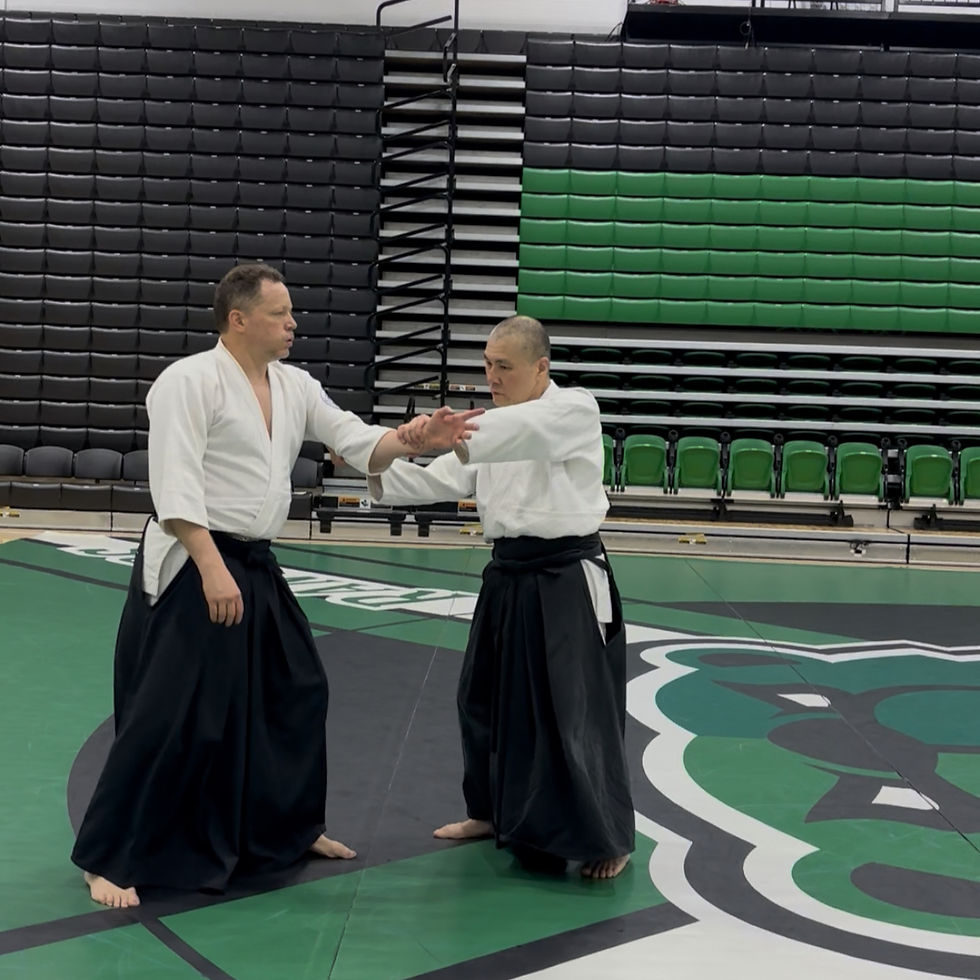What "Non-Throwing Practice" Taught Me My Experience at the MAF Summer Camp
- 無刀会 合気道
- Jun 26
- 2 min read
I participated in the Midwest Aikido Federation (MAF) Summer Camp held in Kenosha, Wisconsin, USA. This camp is a week-long annual event held every June, and features Shoji Seki Shihan (8th Dan, Aikikai Hombu Dojo) as the instructor.
The training took place in the spacious gymnasium of the University of Wisconsin–Parkside. Participants stayed in student dormitories, and meals were provided in the campus dining hall. Various participation options were available—full week, half week, or single days—making it easy to join according to one’s schedule. I chose to attend the full week.

I was excited to see what I could learn through the intensive schedule of 15 classes (3 per day). As someone who also teaches Aikido, I was especially interested in how Seki Shihan would structure the training and guide the participants throughout the week.
The content of the training changed between the first and second halves of the week. The first half consisted of standard training. In the second half, however—perhaps out of consideration for participant fatigue—the focus shifted to non-throwing practice, in other words, techniques that emphasized movement only up to the point of breaking balance (kuzushi). At first, I assumed the change was simply to prevent injury. But I soon realized that this non-throwing practice offered something far more valuable.
In regular practice, being thrown is expected. Because of this, the uke often doesn’t try to recover their posture after being off-balanced—they simply go with the throw. Also, due to the fear of being thrown, it’s common for ukes to unconsciously tense up or retract their arms. I’ve certainly experienced that myself, often without even realizing it.
By contrast, in non-throwing practice, you can focus your awareness on the process of being unbalanced and how your body responds as it tries to maintain balance. The purpose of this practice is to surrender to the flow of the partner’s energy while keeping your body in a position where you can move at any moment.
This quality makes the practice especially effective for beginners and older practitioners. Since there’s no need to perform forward rolls, they can move with a greater sense of safety and confidence.
Moreover, this practice is also extremely beneficial for intermediate and advanced students. For example, in order to maintain connection with the partner without relying on grip strength, you must move your entire body naturally in the direction your arm is being turned. Of course, your balance will be broken—but because the practice stops short of the throw, you must find ways to maintain your posture even while being off-balanced. This cultivates the ability to sustain balance through your body, without resetting by rolling away—an invaluable experience.
Precisely because you don’t roll, you’re able to feel every stage of being unbalanced with greater clarity and care. As an instructor, I found this approach full of insights and new possibilities for how Aikido can be practiced and taught.

Nobusada Yanagisawa


Comments